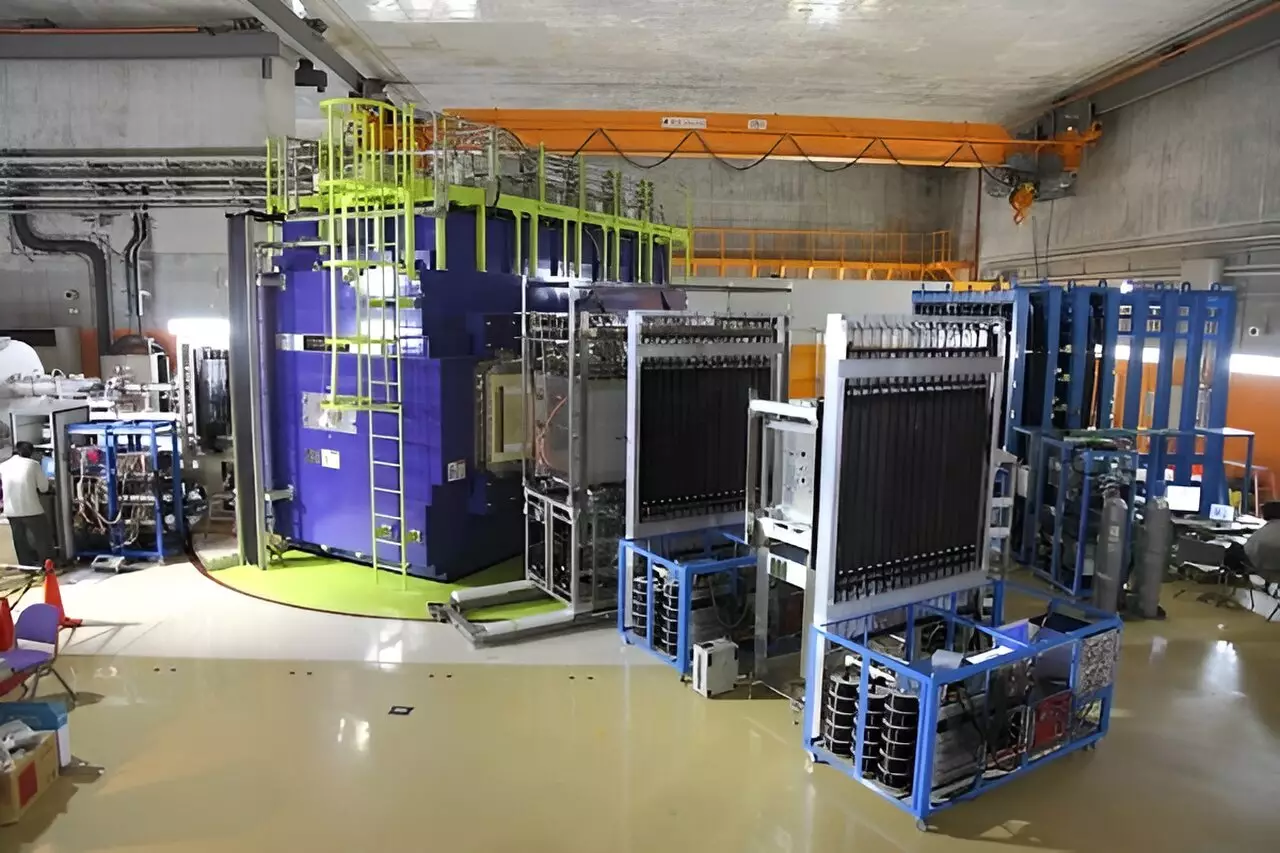In a groundbreaking endeavor, researchers at the RIKEN Institute’s RI Beam Factory (RIBF) in Japan have achieved a significant milestone in nuclear physics by detecting a rare fluorine isotope, known as 30F. This discovery presents an opportunity to deepen our understanding of the complexities of nuclear structures and the phases they inhabit—a pivotal aspect that extends our grasp of fundamental physics. The work is spearheaded by the SAMURAI21-NeuLAND Collaboration, a large consortium that includes eminent scientists from RIKEN, GSI-FAIR, TU Darmstadt in Germany, and various other global research institutions, all dedicated to unraveling the secrets of this elusive isotope.
The team’s efforts focused on deciphering the spectroscopy and neutron separation energy of 30F, with their findings published in the esteemed journal, *Physical Review Letters*. Julian Kahlbow, the corresponding author of the study, articulated that their research ventured into the neutron-rich landscape of the periodic table, pushing the limits of our current understanding. Notably, this quest aims to test existing theories about nuclear structure, especially those surrounding the so-called “magic numbers,” which play a key role in nuclear stability and configuration.
Traditionally, at a neutron number (N) of 20, one would expect significant gaps in energy levels amongst nucleons—a phenomenon indicative of nuclear “magic.” However, the investigation has drawn attention to an apparent anomaly: the breakdown of this energy gap in certain isotopes, specifically creating what physicists define as an “Island of Inversion.” This term characterizes a region where the expected magicity fails, potentially yielding insights into a conceptual shift in nuclear configurations.
One of the most significant challenges in studying 30F lies in its exceedingly brief existence, decaying within mere seconds. As Kahlbow explained, direct measurements were elusive due to its unbound nature. Instead, the researchers ingeniously reconstructed the graphite of this isotope through its decay products, specifically by examining the output of the related isotopes 29F and a neutron. This meticulous analysis required innovative experimentation with advanced equipment like the BigRIPS fragment separator, through which they produced an ion beam of 31Ne traveling at roughly 60% of the speed of light.
Upon collision with a liquid hydrogen target, the resulting process allowed for the generation of 30F, which decayed into 29F and a neutron almost instantaneously. Critical to their measurements, the team utilized NeuLAND, a sophisticated neutron detector weighing four tons, which played an integral role in detecting the fleeting neutron emitted during the decay.
The findings made by the SAMURAI21/NeuLAND collaboration hint at the existence of a superfluid state detected within the isotopes 29F and 28O, marking a compelling advancement in nuclear physics. Kahlbow and his colleagues emphasized that these isotopes exhibit a significant deviation from classical nuclear structure, ultimately leading to speculation that they may represent a distinct state of nuclear matter characterized by superfluidity.
Such a phase has been previously documented but predominantly in heavier isotopes such as those in the Tin (Sn) chain. The researchers proposed that excess neutrons within 29F and 28O form pairs and occupy varying energy levels, a feature reminiscent of Bose-Einstein condensates, further alluding to the complexity of interactions between nucleons under extreme conditions.
The implications of these findings are immense, signaling a paradigm shift in understanding neutron-rich nuclei. Kahlbow envisions a range of future experiments aimed at elucidating details of neutron pair correlations and refining measurements of nuclear structures. Such pursuits could unravel the peculiar characteristics of exotic isotopes, such as 30F, as well as advance insights into the foundational principles governing nuclear matter.
Furthermore, the study posits that the peculiar properties observed may hold significance for astrophysical phenomena, particularly in the realm of neutron stars, where nuclear interactions operate under conditions parallel to those explored in this research. By aligning their findings with ongoing theoretical discussions, the SAMURAI21/NeuLAND Collaboration is paving the way for transformative inquiries into the boundary of nuclear existence.
The investigation into the rare fluorine isotope 30F by the SAMURAI21/NeuLAND team represents a considerable stride forward in the field of nuclear physics. By challenging preconceived notions of nuclear magicity and unveiling potential superfluid states, they are opening new avenues for scientific exploration. The reported findings underscore the need for continuous innovation in experimental techniques and collaborative efforts across global research institutions. As they immerse themselves in this largely uncharted territory of the chart of nuclides, the implications of their work could redefine our understanding of nuclear matter and its corresponding behaviors in extreme environments.

